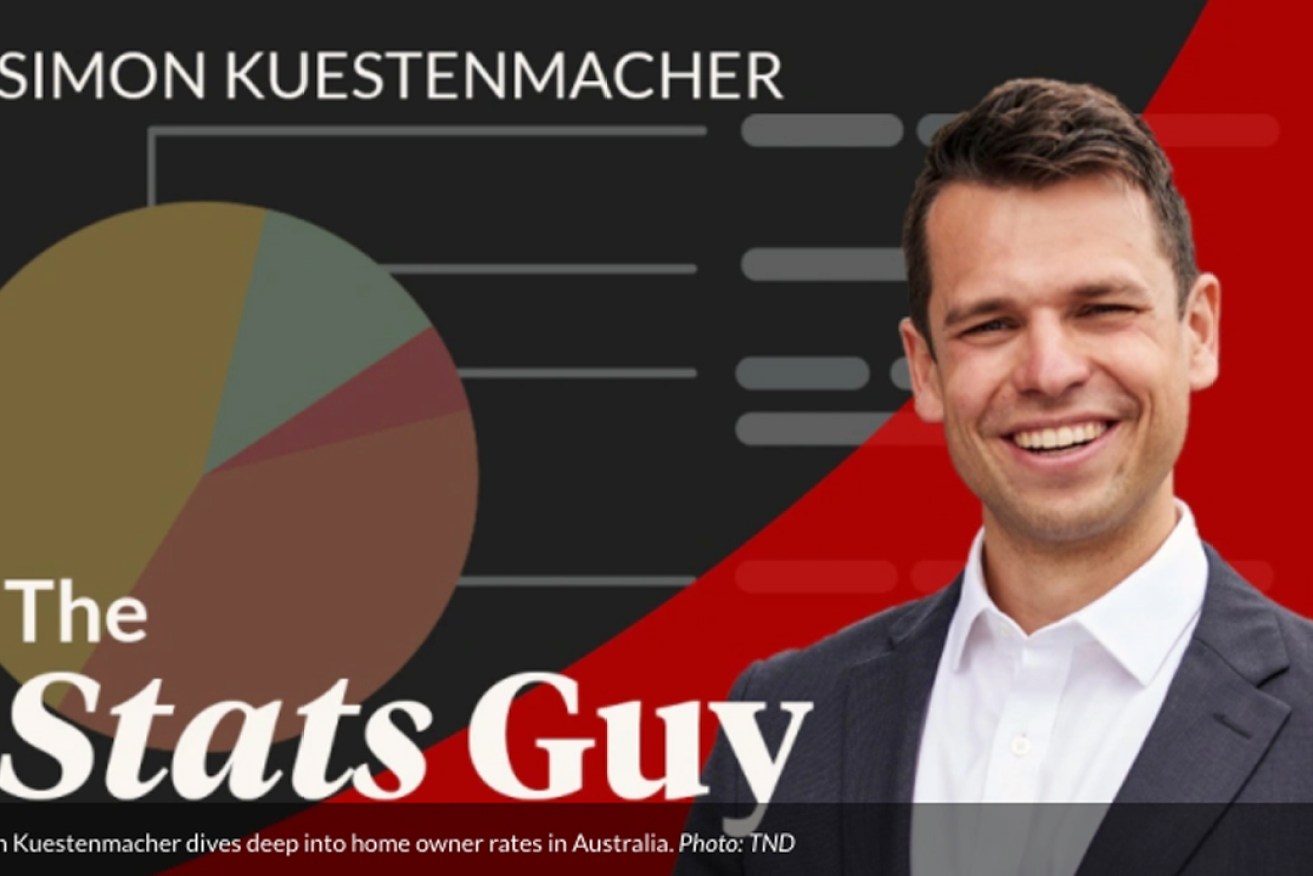Let’s talk cocaine – from a public health perspective
Our resident demographer argues that stats point to the war on drugs being won by drying up demand.


Last year I wrote a column about Australia’s successful public health campaigns to combat smoking.
After the piece was published, I received an invitation for lunch by the PR manager of a large tobacco company to discuss this “fascinating and misunderstood area of public policy”.
Not every invitation deserves a reply, but I am very keen to learn who is inviting me for lunch after today’s column about … cocaine!
I stumbled across a fascinating chart showing the street price of a gram of cocaine around the world.
Australia is one of the most expensive cocaine markets in the 50 national markets included in the data. In 2021 a gram was priced at US$263 ($382), that’s three times the German price and more than six times what the Portuguese pay.
Consider that the penalty for drug trafficking in Saudi Arabia, one of the two markets where cocaine is more expensive, is death and you understand why Australia is such an attractive market for South American cocaine whole sellers.
In the last months, you would’ve seen several headlines in Australian media about record cocaine busts. We are talking about up to 1200 kilograms at a time.
Each brick of cocaine – you are used to seeing cool movie detectives cutting into these with a knife – weighs a kilo. That means drug busts now regularly catch hundreds or even thousands of these in one go.
A large network of workers in international and Australian ports and airports are implicated in such transactions.
Cocaine prices in Australia have risen since the 2021 data and a single brick of cocaine is now worth A$400,000, give or take.
The production cost is harder to estimate (unsurprisingly, annual reports of drug cartels aren’t published) but if you buy a brick deep inside Columbia’s jungle you pay US$2200 according to a 2016 report by Stratfor.
Jungle travel is annoying, so you might want to buy your brick for US$7,000 at a Columbian port. The cost for each brick goes up the closer the piece travels to the end user. Everybody involved in the supply chain want to take a cut and the price rises.
Talking about cutting, a brick tends to get cut along the way.
Meaning the pure cocaine is mixed with similar looking cheap substances. This is a great way of increasing your profit margin as you hand the product to the next person in the supply chain.
Sure, the final product gets diluted but that hardly matters since neither health nor tax authorities interfere with your operations and end users can’t complain to the cocaine ombudsman.
Cocaine has increased in popularity in Australia between 2016 and 2019. Over six per cent of the population are expected to use cocaine (that’s one out of 17 Australians). Who uses cocaine? Lots of people but some more than others: young people, males, reasonably cashed-up folks, tradies, managers, city dwellers, smokers, heavy drinkers.
Cocaine users tend to be employed and are most likely to work in hospitality, construction, or professional services. These industries are incredibly fast-paced and working hours can be extreme. A drug like cocaine comes in handy once caffeine and sugar don’t do the trick.
The drug makes you more alert, energetic, confident, and it curbs appetite. You can do what you are doing for longer. The hustle culture in some workplaces all but actively promotes the use of cocaine.

Despite law enforcement’s efforts, bulk cocaine shipments keep Australian addicts supplied.
That’s dangerous physically but can have organisational repercussions if coked-up traders or managers make decisions with company money. The list of negative short-term side effects is long but let’s not worry about them today.
Let’s just focus on long-term consequences. Users increase their risk of strokes, heart attacks, paranoia, kidney failure, high blood pressure, and many general functions decrease significantly. While cocaine provides short-term sexual energy, long-term sexual performance and drive are impacted negatively.
Even mental alertness is impacted negatively in the long run. Most crucially users can easily overdose. Remember that users tend to not have any idea how pure their cocaine is. Users are guessing rather than measuring what they consume.
Warring opinions on drugs
There can’t be two opinions about cocaine from a public health perspective. It’s terrible for you, despite some cool short-term effects, and must be banned.
“What a nanny state! Sure, it’s bad for me but I am an adult. The state allows me to smoke, why can’t I use cocaine? I carry all the risk, don’t I?”
Well, some substances impact society in ways so bad that we simply ban them. That’s an easy enough process if there isn’t massive demand for the product.
Globally, the war on drugs made drug trafficking only more lucrative. Stricter regulations mean only big players are capable of providing the complex logistical infrastructure and networks that are required to ship large quantities of an expensive, highly illegal product across the globe while bribing, forcing and/or avoiding authorities. These global cartels defend their markets with brutal force from source to end user.
Once a drug is illegal, it also becomes more dangerous and more immoral to use. Let me explain.
Illegal products aren’t quality tested whatsoever. Users rely on the word of their dealers, usually petty criminals with no real knowledge about the products they are peddling – hardly a good source for health advice. Illegal products are cut in countless ways – from a health perspective you should never consume an illegal product as it’s just too risky.
While it is safe (within reason) to consume a bit of alcohol today, consumption was less safe in the Prohibition era in the US. When alcohol was illegal and the demand didn’t dry up, illegal organisations stepped in and provided the product. The result was a booming moonshine industry. These spirits often wouldn’t have passed health regulations. The more illegal something is, the less safe it is to consume.
Illegal, immoral injurious
I would also argue that the consumption of anything that is illegal is immoral even if the consumption might be considered moral when the same product is legal.
Once illegal, only criminal institutions operate in the market. They don’t pay tax (that’s half the fun when you are operating in the illegal economy) and they use violence to retain their market share. These organisations also tend to diversify their portfolios and operate in various illegal areas.
Your friendly global drug cartel engages in human trafficking, money laundering, weapon sales, and God knows what else at the same time as they provide cocaine to your neighbourhood dealer. Your cocaine dollars assist human trafficking efforts.
Paradoxically, the war on drugs can never be won by the authorities. As long as a market exists, drugs will find their way to Australia – even if we see ever more billion-dollar drug busts and if ever more resources are thrown at the problem.
The war on drugs will be won by drying up demand. Once Australians stop using cocaine, global cocaine merchants will stop shipping it here.
This makes fighting drugs less spectacular and less sexy – it does look cool when a troubled Hollywood detective cuts into a brick of cocaine and also when armed police make a billion-dollar drug bust, right?
Eliminating cocaine involves less sexy efforts. We must educate young people about risks and side effects, counter the hustle and stress culture in key industries, and even stigmatise drug use again. This last suggestion runs counter to the current paradigm of seeing users as addicts and victims of drugs.
I understand how controversial this might be. I very much argue in favour of rehab clinics, user support, and helping drug users as much as humanly possible, but removing the social stigma of using cocaine to a degree only created more users.
The complete opposite approach would be to legalise cocaine. Health authorities would ensure that cocaine isn’t cut and grab a juicy tax profit. All the negative health consequences would be priced into the product. The cocaine industry would be forced to run anti-cocaine awareness campaigns and finance rehab clinics – we would repeat the anti-smoking playbook while not outlawing the substance.
Australia successfully reigned in the negative effects of smoking and now proactively tackles vaping. I don’t see why we couldn’t settle on a nationwide agreement to curb the use of cocaine and other socially destructive drugs.
The legalisation of cocaine seems extreme to me, and I would much prefer drying up demand at all costs. At least a legal cocaine industry could generate an invitation for lunch that I could ignore…
Demographer Simon Kuestenmacher is a co-founder of The Demographics Group. His columns, media commentary and public speaking focus on current socio-demographic trends and how these impact Australia. Follow Simon on Twitter, Facebook, LinkedIn for daily data insights in short format.
This story first appeared in our sister publication The New Daily.





